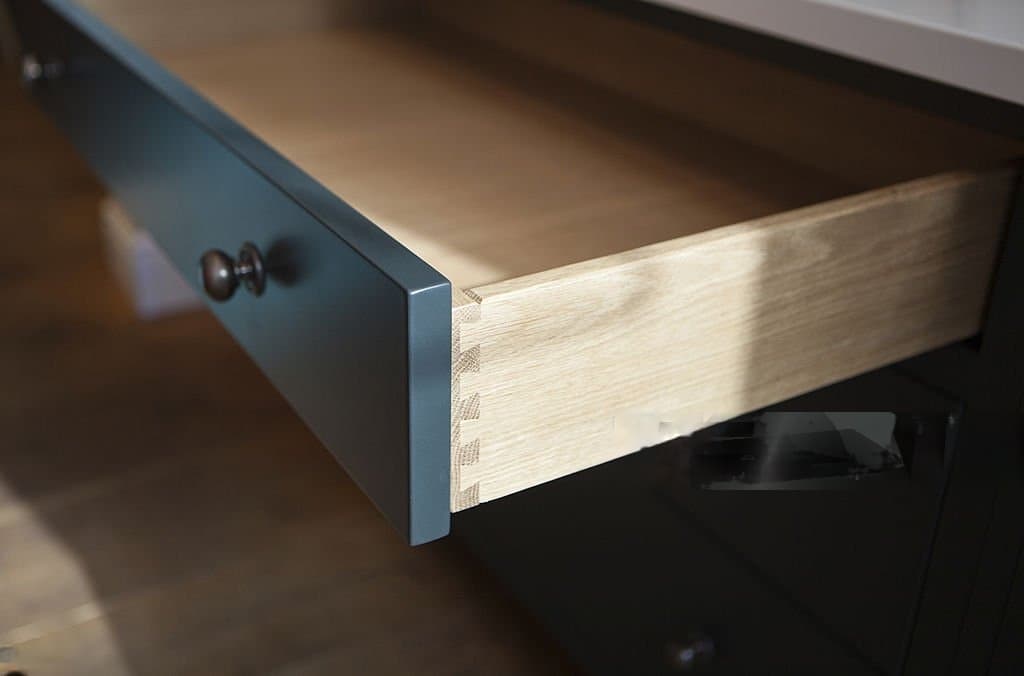Expert Guide: How to Make Strong and Accurate Dowel Joints?

A dowel joint is a type of woodworking joint that uses cylindrical rods, typically made from wood, plastic, or metal, to join two or more pieces of wood together. Dowel joints are commonly used in carpentry and woodworking applications to join two or more pieces of wood. They are particularly useful in furniture making, constructing shelves, reinforcing butt joints, and toy making. Dowel joints provide a strong and accurate joint, making them ideal for woodworking projects that require a high level of precision and durability.
How to make a dowel joint?
To make a dowel joint, you will need a doweling jig, drill bit, dowels, and glue. The doweling jig is used to guide the drill bit into the stock square to the edge of the board. The holes in the corresponding boards are drilled to a depth of about 1/16 of an inch deeper than 1/2 of the length of the dowel. The dowels are then glued into the holes and the boards are clamped together until the glue has dried fully.
When making dowel joints, it is important to align the two boards to be mated into their final positions. You’ll need to use at least two dowels for each joint, more if the joint is particularly wide. One rule of thumb is that if the board(s) are less than 6 inches wide, you should use at least two dowels for each joint. If the board(s) are wider than 6 inches, you should use at least three dowels for each joint.
To ensure a strong and accurate dowel joint, it is important to use a doweling jig. Doweling jigs are typically metal and are designed to guide the drill bit into the stock square to the edge of the board. The jig should include bushings to accommodate bits of varying diameters.
When drilling the holes for the dowels, it is important to drill each hole about 1/16 of an inch deeper than 1/2 of the length of the dowel. This will ensure that there is enough glue surface to create a strong joint.
Once the holes are drilled, you can glue the dowels into the holes. It is important to use a small amount of glue in each hole, as too much glue will either squeeze out or make it difficult to insert the dowels. Immediately clean up any glue that does squeeze out with a slightly dampened cloth.
Next, insert some glue into the opposite holes and position the board onto the corresponding dowels. Push the board straight onto the dowels as far as you can by hand, being careful not to use a twisting motion. When the joint is closed as best, you can by hand, use a woodworking clamp to tighten the joint the rest of the way until the joint is closed completely.
Keep the clamp in place until the glue has dried fully, typically 24 hours.
Advantages And Disadvantages Of Using Dowel Joints
Advantages of Dowel Joints Include:
- Strength: Dowel joints are strong and can withstand a lot of pressure without breaking. They are often used in furniture making and other applications where a strong joint is required.
- Alignment: Dowel joints can help ensure that pieces of wood are aligned perfectly, which can be important in applications where accuracy is important.
- Speed: Dowel joints are relatively quick to prepare and assemble, especially when using a doweling jig.
- Simplicity: Dowel joints can be made with just a drill, dowels, glue, and measuring equipment, making them a relatively simple option for DIYers.
Disadvantages of Dowel Joints Include:
- Alignment: While dowel joints can help ensure alignment, they can also be difficult to align perfectly, especially for beginners.
- Strength: While dowel joints are strong, they may not be as strong as other types of joints, such as mortise and tenon joints.
- Machining: Dowel holes must be machined accurately, otherwise assembly forces can grow very high.
- Glue: Too much glue can split weak board like chipboard, and low machining tolerances can make assembly difficult.